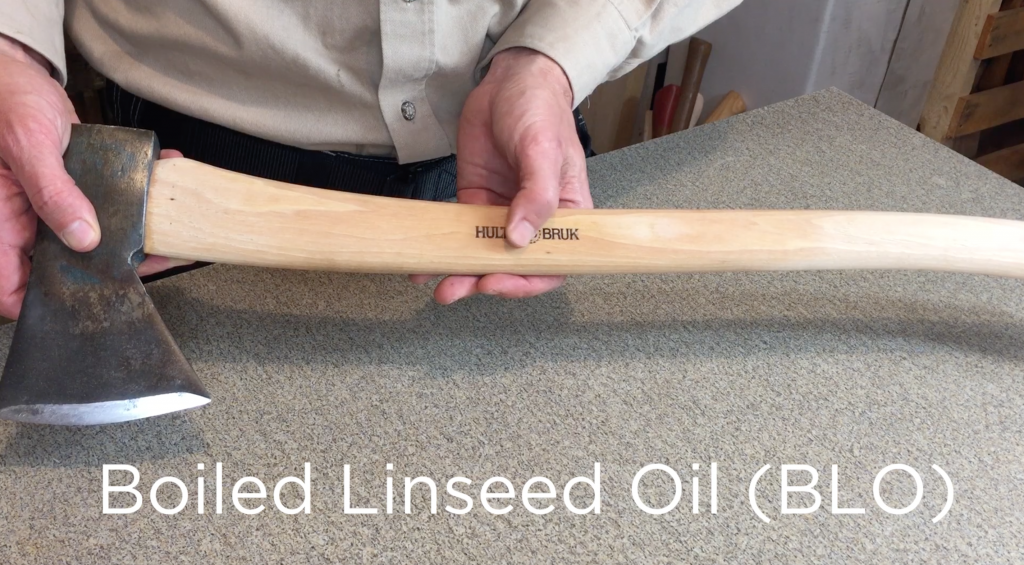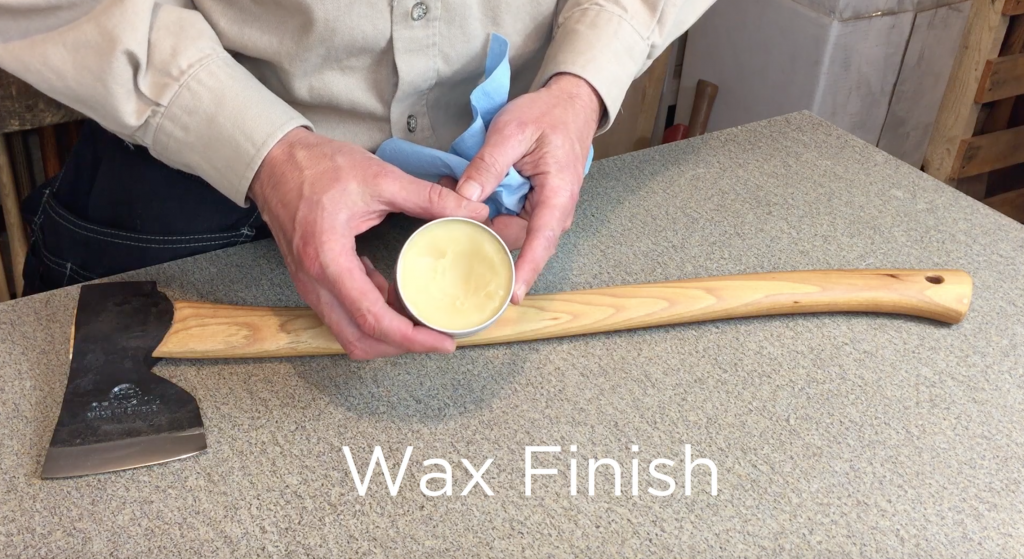The axe is one of those tools that looks better with use. The more you use and maintain an axe, the better it looks. Today we’re looking at easy and simple handle treatments for your Hults Bruk axe. Handle treatments not only help preserve and protect your handle but also will enhance its appearance over years and years of hard use.
All Hults Bruk axes are all made from premium American hickory selected for superior grain orientation and run out. The handles for both premium and standard line of Hults Bruk axes come from the factory with a coat of boiled linseed oil (BLO). BLO is an effective and traditional drying oil that seals the grain, helps repel moisture, improves the grip and preserves the look of the wood.
This is important to remember because if you’re going to apply any dyes, stains or paints to the handle this coat of oil might affect the result. So we’re going to look at handling finishes that can be used on top of the factory finish, where no additional prep work is needed.
Hults Bruk uses handles made with heartwood, sapwood, or a mix of the two. Heartwood handles are darker, and if you get one, be grateful as they are beautiful. Contrary to what old-timers might tell you, there is no difference in the inherent strength or durability of heartwood or sapwood handles. Or vice versa, they are both strong enough for use options and heartwood can be a gorgeous option.
Boiled Linseed Oil (BLO)

Boiled Linseed Oil is a great way to quickly bring a Hults Bruk back to its factory look. BLO is widely available and can be found at hardware or woodworking stores. Most BLO today has additives and drying agents, which are not that good for you, so wear gloves when applying. You can find raw or organic brands of BLO that don’t have the additives, but the easiest way to apply is still to wear gloves and lather the oil on the handle using your hands. Simply wipe the BLO on the handle, let the oil soak in a while, then wipe off the excess with a clean rag. If you apply the oil hot, it will penetrate the wood better. Some people might dilute the oil with turpentine or combined with other types of oil as a special recipe, these all work well in their own way.
Tung Oil

Another oil that works great is tung oil. In my experience linseed oil tends to age and darken a little more than tung oil. And tung oil tends to maintain a more neutral color longer. Apply tung oil the same way as linseed oil. Wearing a glove, wipe the tung oil on the handle, let it soak in, then wipe off the excess with a clean rag and allow the handle to dry.
Wax Finishes

If you don’t want to mess around with oils and drying times, try a wax coating. There are several DIY recipes for handle wax online, or you can purchase some really nice ones. Wax is the easiest finish for a handle by far. Just rub on, let dry then buff with a soft cloth, and you’re done. Waxes can wear off a lot faster than oil, but they are so easy to use, it’s often worth it.
Danish Oil

Sometimes the patterns and textures of the wood grain are the cutting marks left by the lathe. These offer some interesting opportunities. For example, this handle has a great tiger stripe look to it. We could sand it all down and get rid of those textures, or we can enhance it. Danish oil is a hard drying oil that comes is a variety of hues. It’s great for bringing out the natural grain and darkening the wood overall. This even works on top of the factory oil finish. But the drying time is quite a bit longer since little of the oil is going to soak in. Apply liberally. To remove excess, place the handle in a vice horizontally. The excess oil will pool along the bottom and you can wipe it off along the spine.
Pine Tar / Stockholm Tar

Pine tar is a sticky coating that dries and ages beautifully. Pine tar has veterinary applications, so it’s often found at supply and feed stores for use with horse and cattle. The highest grade of pine tar is called Stockholm Tar, which has been a preferred coating for wooden ships for centuries. Pine tar and heartwood look amazing. Pine tar is sticky and a bit tricky to apply, so I heat mine up. Many people dilute pine tar with BLO or tung oil, which also works fine, but might not come out as dark. Be prepared for long dry times, but it’s well worth the results.
About Lane Packwood (@Bushcraftsisyphus)
Lane is a veteran and former military officer who found a love for collecting and restoring old axes while working in the outdoor industry. He lives in Boise, Idaho, and can usually be found in his garage workshop grinding experimental angles on old axes just to see how they chop. You can follow Lane’s axe adventures on his YouTube Channel. Warning: It’s for true axe nerds only!

